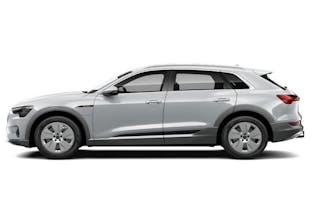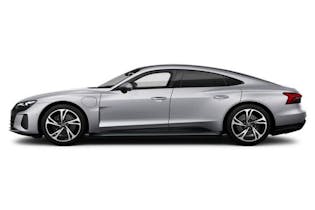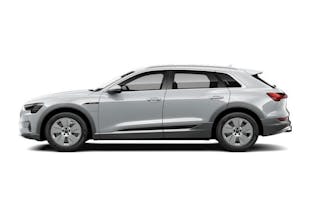Kia Niro PHEV Earth car review
One week living with the Kia Niro Plug-in Hybrid Earth.

Fresh from driving the hybrid version for a week, we were given the opportunity to compare it back to back with the plug-in hybrid (PHEV) version of Kia’s surprisingly spacious crossover. Turns out this is the first PHEV we’ve driven that’s met its EV-only range claims!

First impressions
The Earth model is the second step up the specification ladder (it goes Light, Earth, Water and GT-Line). The plug-in hybrid cabin is identical to the hybrid model, except for a tiny button next to the gear lever to change the drive modes and select EV-only when you get under way.
The boot is also significantly smaller at 348L (versus 425L in the hybrid). That’s because the extra batteries that are needed to power the car are found there. From the outside, you can tell it’s a PHEV because it has an extra fuel flap just by the front wheel on the passenger side; that’s where you plug it in to charge the battery.
Being tall, I did find my knee resting on the door which is hard plastic. I thought it’d get sore or uncomfortable, but it never did. Maybe it’s because it’s a smooth surface.
The Niro PHEV Earth costs $54,000, which is $7000 more than the regular hybrid version. However, you do get a larger rebate on the Clean Car Discount – $5750 rather than $3418.
How we test
Each vehicle we trial gets the same treatment: a week of commuting in rush hour from Lower Hutt to Consumer HQ (a round trip of 28km); a run to the supermarket; and a drive over the Remutaka Hill and back, to see how it goes on a longer weekend trip. In total this makes for about 270km of motoring.
We record fuel use (both actual and on the trip computer) and measure electricity usage where appropriate, with PHEVs and EVs. The actual fuel use is measured by filling the tank to the brim at the start of the trial and then again at the end, and comparing numbers. It’s an inexact science that we use as a check, but it’s still a real-world appraisal – just one you take with a grain of salt.
Commuting

This PHEV is built for the commute. It has enough power for meandering your way into town in traffic and you can still hit gaps at roundabouts, but it does it all in serene silence. It has wireless Apple CarPlay that remembers exactly where you got up to in your podcast and immediately plays it when you get going.
It spent the entire week in EV mode and never needed the petrol motor to kick in.
When you plug it in at the end of the day, there are three green lights on the dash that show the state of charge of the battery. It’s a nice touch as you don’t have to peer through the driver’s window at the dash for an indication, like you do in some other PHEVs.
Supermarket trip
Despite the smallish boot, it didn’t have any problems swallowing up shopping. Because it pootles along silently in EV mode, I did surprise a few people who wandered aimlessly out into the carpark. That’s their fault, but serves as a reminder that electric vehicles are very quiet and some people don’t hear them coming.
It’s very easy to park due to its short overall length and good manoeuvrability. It’s just very practical and easy.
Longer journey
We’ve got to give Kia credit for its claimed EV range on the Niro plug-in. It’s the first PHEV that I’ve ever driven that meets its claims, and it did it in the most taxing conditions – at highway speeds and driving up steep hills. The dashboard told me I had 63km of range and the battery ran out just after going 63km. That makes me think that you could get a lot more out of it if you only drive around town. Nice work, Kia!
The caveat there is that it did drop out of EV mode and switch to hybrid twice. Each time was for about 20-30 seconds before the car switched back to EV. Both times were on steeper sections that taxed the electric motor too much. The electric motor can only give you 62kW of power, which isn’t much at all for a car that size when trying to go 100km/h uphill.
When the electric and petrol motors are working together, it’s clearly faster and has a lot more power than the hybrid Niro. After the battery had drained and it worked just like a normal hybrid, the trip computer averaged out at 4.6L/100km.
Final thoughts

When you take into account the larger Clean Car Discount, you end up paying an extra $4668 for the PHEV. That’s totally worth it in my books – I’d do it for the quiet driving alone. But if you only use it in EV mode, the money you save in fuel costs will quickly eat into the that extra amount. It’s a great commuter with plenty of space and the cabin is just a generally nice place to be.
Kia claims a minuscule 0.8L/100km for the PHEV Niro. The trip computer measured it at 1.3L/100km. Our actual fuel usage was 2.1L/100km. That’s quite a bit more, but still easy going on the wallet. If we hadn’t gone on the road trip, it wouldn’t have used any petrol all week.
The vehicle was kindly lent to us by Kia NZ.
We've tested 95 electric and hybrid cars.
Find the right one for you.
Audi

Audi

Audi

Member comments
Get access to comment